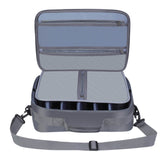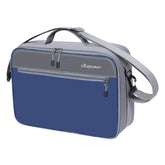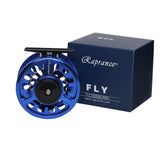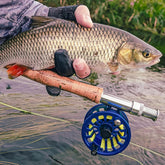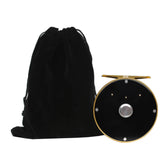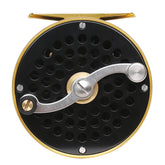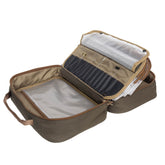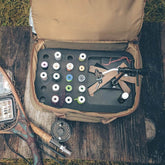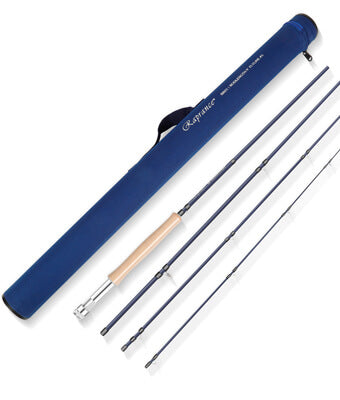Fly Reel: Essential Combos and Affordable Options for Saltwater and Freshwater Fishing
When it comes to fly fishing, selecting the right reel can make or break your experience. A quality fly reel is essential for controlling your line and managing the fight with a fish. Understanding the different types of fly reels, from affordable options to specialized saltwater models, is crucial for any angler.

I often recommend considering a fly reel combo for beginners, as they provide a balanced setup with both reel and rod included. This can greatly enhance performance on the water, making the learning process smoother. For seasoned anglers, choosing the right saltwater fly fishing reel can lead to success in tackling larger species and challenging conditions.
Affordable fly fishing reels are also available and can perform well without breaking the bank. They offer a practical solution for those just starting out or for anglers looking to expand their gear without significant investment. Investing time in selecting the right equipment will ultimately enhance your fly fishing experience.
Fly Reel Fundamentals
Fly reels play a crucial role in fly fishing, impacting performance and enjoyment. Understanding their functions and features helps in making informed choices tailored to specific fishing environments and species.
Understanding Fly Reels
A fly reel serves a key purpose in line management and fish control. It helps in storing the fly line, providing drag when a fish pulls, and enabling smooth retrieval. The drag system varies in design, with adjustable settings important for targeting species like trout or bass.
Components of a Fly Reel:
- Frame and Spool: Made from durable materials, such as aluminum or composite, which resist corrosion.
- Drag System: A good drag system is vital for maintaining control over a fish as it fights.
- Reel Seat: An aluminum reel seat is preferred for its strength and minimal weight.
Understanding these components aids in selecting a reel that meets specific demands.
Choosing the Right Fly Reel
Selecting the right fly reel involves considering several factors related to the fishing environment and target species. I prioritize reel weight, material, and drag type. For saltwater or bass fishing, a strong, corrosion-resistant reel is crucial.
- Weight: Match the reel weight to the rod for optimal balance.
- Durability: Choose reels that withstand harsh conditions; aluminum is often a solid choice.
- Performance: Look for smooth operation and reliable drag response, especially when targeting larger fish.
When I'm starting with fly fishing, an affordable yet functional reel can provide a great introduction and ensure a positive fishing experience.
Fly Fishing Reel and Rod Integration
Integrating the fly reel with the rod is essential for optimal performance in various fishing environments. The right combination enhances casting accuracy and overall efficiency, making your fly fishing experience more enjoyable.
Assembling Your Fly Fishing Combo
To assemble your fly fishing combo, I first select a fly rod that matches the reel's specifications. I ensure that both gear components share the same weight class, typically found on the reel or packaging. For example, if I choose a 5-weight rod, I pair it with a 5-weight fly reel.
Next, I thread the backing line through the reel's guides. I then attach the backing to the reel spool using an arbor knot. Following this, I add the fly line and leader, taking care to securely connect them for consistent performance.
Using a strong connection is crucial, as weak links can lead to lost catches. Lastly, I check all components to make sure they're secured and ready for use.
Balancing the Fly Reel with the Rod
Balancing the fly reel and rod is vital for efficiency in casting and retrieval. A balanced setup reduces fatigue and allows for longer fishing sessions. When adjusting, I hold the rod at the grip and rest it horizontally on my finger.
If the rod tilts downward, I may need to use a lighter reel. Conversely, if the rod tips upward, a heavier reel is required. The goal is to achieve a neutral balance point, providing greater control.
Additionally, I ensure the reel drag system is finely tuned. This guarantees quick and smooth adjustments while fighting a fish. Proper balance and tuning contribute to improved performance in various fishing environments, leading to more successful outings.
Saltwater Fly Fishing Reels
When engaging in saltwater fishing, I find that choosing the right fly reel is crucial for handling the unique conditions of saltwater environments. Durability and resistance to corrosion are key factors to consider.
Special Considerations for Saltwater Fishing
Saltwater fly fishing reels need specific features to withstand harsh conditions. A corrosion-resistant material like anodized aluminum is essential. This ensures that the reel can endure saltwater exposure without suffering damage.
The drag system plays a vital role in managing larger fish. I prefer reels with strong, reliable drag mechanisms to help control powerful saltwater species, which can be significantly heavier than panfish found in freshwater.
Additionally, an aluminum reel seat offers enhanced durability. This material prevents saltwater corrosion and ensures that the reel remains securely attached to the rod, maintaining stable performance during challenging fishing situations.
Selection of Affordable Fly Fishing Reels

When choosing an affordable fly fishing reel, I focus on aspects such as durability and features that cater to beginners. A well-selected reel can enhance my fishing experience without breaking the bank.
Factors Affecting Price and Value
Several factors influence the price and value of affordable fly fishing reels.
-
Material: Reels made from durable materials like aluminum or high-grade plastic tend to last longer. While aluminum reels are more expensive, they offer better longevity.
-
Weight: Lightweight reels are easier to handle, especially for beginners. A balance between weight and durability is essential for comfort during long fishing sessions.
-
Drag System: Reliable drag systems are crucial for controlling fish. Affordable reels may have simpler drag mechanisms, but they should still function effectively.
-
Brand Reputation: Renowned brands often provide quality at a reasonable price. I prefer reels from manufacturers known for their performance and support.
-
Maintenance Requirements: Some reels require regular maintenance, affecting long-term costs. A low-maintenance reel can be more economical for casual anglers.

